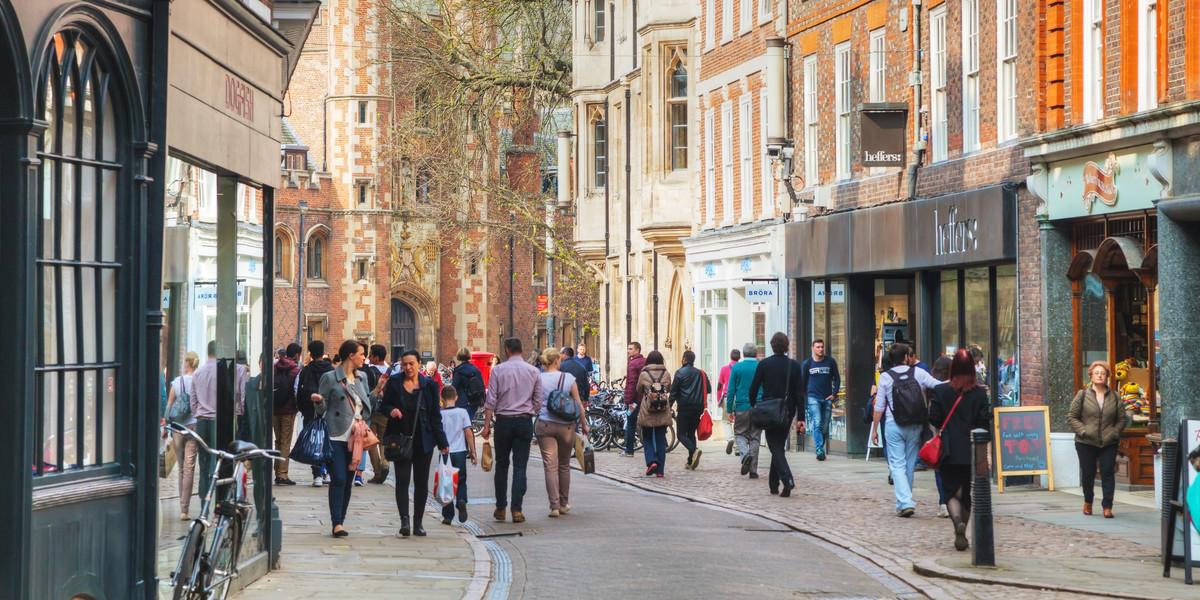Although Covid-19 has made the outlook significantly bleaker, things have been pretty bad for the UK high street for much of the past decade.
According to the Centre for Retail Research (CRR), there are now more than 50,000 fewer shops on our high streets than there were ten years ago. High-profile brands that have gone bust or entered administration this year include Beales, Laura Ashley, Kath Kidston, Oasis, Warehouse, Antler, Victoria’s Secret, Monsoon Accessorize, Oddbins and Go Outdoors.
They follow last year’s major high-street casualties, which include Debenhams, Jamie’s Italian, Patisserie Valerie, Jessops, Mamas and Papas, Mothercare, Thomas Cook, Pretty Green, Jack Wills, L.K. Bennet, Clintons and Links of London. Thankfully, some were saved by acquisition, safeguarding many jobs, but many other retailers haven’t been so lucky.
UK retail crisis
As reported by Retail Gazette, UK high street footfall has fallen by 10% in past seven years, with so many of us now shopping online. Some sources report that visitor numbers to Britain’s high streets have fallen by 20% in the past decade. No wonder so many UK high-street shops are vacant.
According to the CRR, UK retail is in crisis and it’s been caused by high costs created by rent, business rate and wage rises, and low profitability because of squeezed margins and intense price competition, while “low growth in consumer spending since 2015 has meant that growth in online sales has come at the expense of the high street.”
Some predict that coronavirus will “vastly accelerate” the decline of UK high street. The CRR describes the lockdown as yet another hammer blow for the UK retail sector. Alarmingly, it expects another 20,000-plus store closures this year (16,073 closed in 2019), with more than 235,000 UK retail jobs to go in 2020 (more than 140,000 went last year).
So far, so bad – but what’s the solution? What could and should be done to rescue the high street?
Business rate reform
Trade association, the British Retail Consortium (BRC), believes we’re living through a period of “reinvention retail”, not “Armageddon retail” (well it did, before the lockdown). Retail is “experiencing a genuine revolution driven by technological innovation” it observes.
Online retail will “continue to grow, as retailers invest in new emerging technologies”, it concedes, while “there will be fewer stores and those stores remaining will offer new experiences”. The BRC says the current business rates system is “no longer fit for purpose and requires fundamental reform”. Many small-business owners and their representative organisations wholeheartedly agree.
“A tax system skewed towards people and property is contributing to store closures and job losses, and stalling the successful reinvention of our high streets,” the BRC says. A reformed business rates and tax system, with more affordable retail space rent would be welcome – but would it be enough?
Reinventing the high street
According to SaveTheHighStreet.org (an “industry movement on a mission to ensure diverse and successful high streets, now and for the long term”), customers still want to “buy local”, with online shopping unable to replace “local, human, real-world shopping experiences”.
It believes that “ways must be found to merge the strengths of local and digital commerce” and calls for the emergence of a “better connected, digitally enabled high street”. Technology could indeed provide high-street shoppers with an experience better tailored to their likely preferences, for example, by remembering your past purchases and (via your mobile phone, before and while in store) drawing your attention to things you’re most likely to want to know about.
Many experts believe that retail won’t be the focus of the town centres of the future, which need to become social places and community hubs, they say. As reported by BBC News, experts believe a “Mars Bar approach” is required, so that town centres become places to “work, rest and play”, not just indulge in retail therapy.
Greater authenticity and choice
And rather than resembling pretty much every other town centre, with the same brands dominating the vista, high street shops must offer more authentic local identity and diversity of choice, if visitors are to be attracted.
The successful local high-street shops of today and tomorrow must offer things that people can’t buy online – not just products – but also fun events, immersive experiences and even “retailainment”. On a practical level, a small independent food retailer could offer cookery classes or a music retailer could put on in-store gigs. The idea is shoppers get a more enjoyable, rewarding and personalised experience.
Regularly staging events during the day and evening has already drawn more people back into some town centres. And making sure that public spaces are welcoming, attractive and well maintained, with plenty of places to eat and drink, good public transport links and adequate, affordable parking, can ensure that they come back.
Time for action
In February 2019, the House of Commons Housing, Communities and Local Government Committee published High streets and town centres in 2030, a report summarising the future role of the UK high street. It believes that UK high streets and town centres “can survive, and thrive, by 2030, if they adapt”.
The committee envisages “activity-based community gathering places, where retail is a smaller part of a wider range of uses and activities and where green space, leisure, arts and culture and health and social care services combine with housing to create a space based on social and community interactions.”
However, it believes that success can only come if central government, local authorities, landlords and retailers truly work in partnership. Government funding must be matched by private sector investment, while the government “needs to go further and move faster to level the playing field between online and high-street retailers” when it comes to taxation, with much lower business rates and rent for high-street retailers.
Doing nothing certainly isn’t an option. As the report warns: “Unless urgent action is taken, we fear that further deterioration, loss of visitors and dereliction may lead to some high streets and town centres disappearing altogether.” Who wants that?











